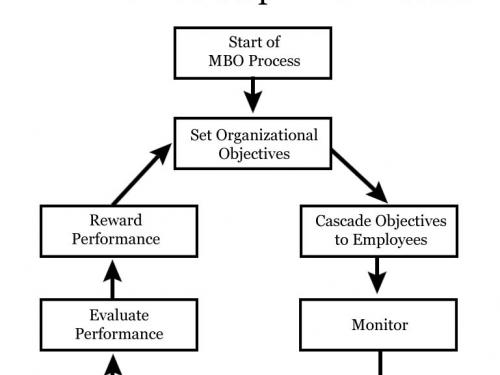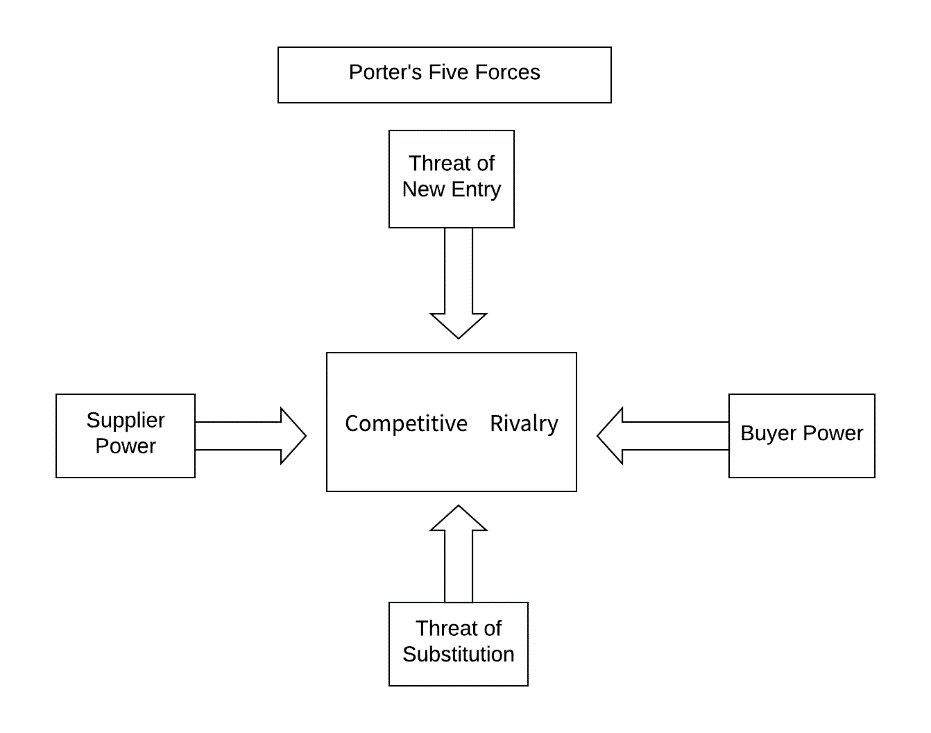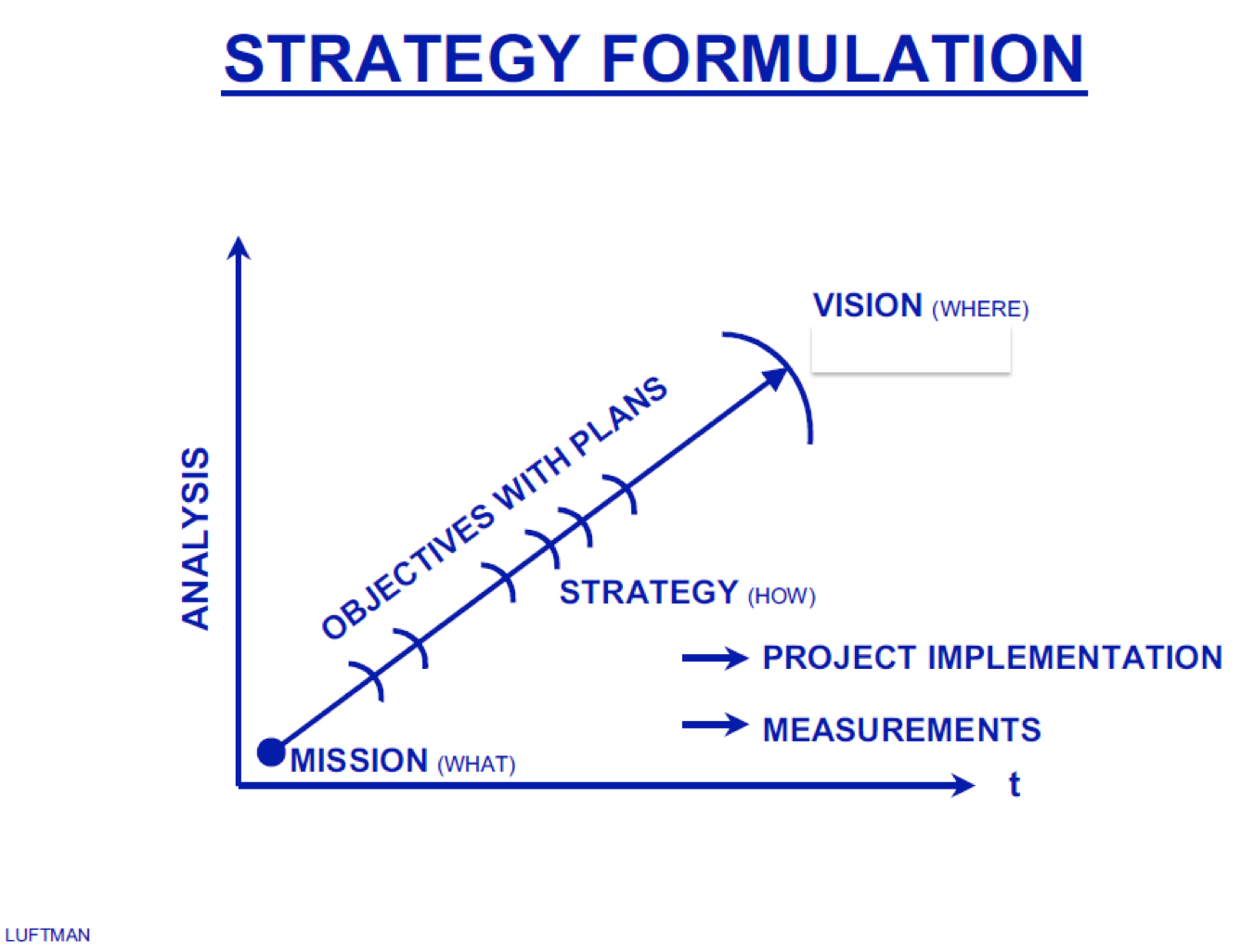
A Multi-case Qualitative Study of Factors Contributing to Formulating Vision and Mission Statements
In this paper, the effects of internal and external forces on the firm will be addressed. Moreover, it will analyze and determine which of these forces is more influential on the firm regarding the formulation of vision and mission statements. Three significant areas of strategic management are explored, which affect vision and mission statement development. These areas include Strategy Formulation, Strategy Implementation, and Evaluation and Control. This paper will demonstrate that the vision guiding the firm often occurs spontaneously or intuitively and is characterized by creative thinking. Further, it will denote that a firm’s vision is most influenced by external forces including political, economic, social, technological, environmental and legal restrictions. The vision and mission statements of the firms Facebook, Amazon, Apple, Netflix, and Google will be examined in a qualitative context and will suggest that primarily the external forces and the external environment more significantly influence the formulation of their vision and mission statements.
Vision and mission statements are both elements of strategic management. As such, strategic management must be defined in the overall context of the development of both the mission and the vision statement to answer the question of, “What is more influential in the formulation of vision and mission statements, internal or external forces?” Strategic management can be defined as a practice that originates with making plans thus securing a pathway and a vision for the future using existing resources in a competitive environment. Moreover, every organization should have a strategic plan. In the past, management guru Peter Drucker expounded on strategic management by developing what he called management by objectives (MBO) as noted in Figure 1.1. The idea was to enhance the success of the organization by integrating the objectives of the employee with the overall objectives of the organization (Drucker, 2007). The concept of Management by Objectives was encapsulated in a firm’s mission statement, reflecting the vision of the organization as the starting point. Drucker also posited that competitive advantage was dependent on the big picture and the use of “analytical thinking and commitment of resources to action” as well as innovation to take advantage of opportunities. Later, Michael Porter used his idea of 5 Forces to explain how an organization can gain a competitive advantage in an industry by reducing price elasticity as annotated in Figure 1.2. His model uses five key forces to define strategic management in a unique way (Porter, 2008). Although his model addresses external forces it does not address vision and mission statements specifically.
In a broader sense what guides an organization’s pathway into the future is that it encompasses choices that have a long-term effect on the success or failure of the organization. Planning is an integral part of the process and is characterized by the vision of the leader to guide the organization in a direction that is fruitful and viable to the organization’s future success. This begins with a vision and then the determination of a set of goals to be achieved culminating in a mission statement. Ultimately, a course of action is implemented to forge ahead and achieve the desired goals and objectives of the organization. This is important from a strategic management perspective in that vision and mission statements provide and develop a clear direction and guidelines for the execution of an organization’s future goals in both an efficient and effective manner. Indeed, the vision and mission statements define an orderly and disciplined process.
From a strategic management perspective, three general categories are the most significant with respect to vision and mission development. They are basic elements of strategic management and are 1. Strategy Formulation, 2. Strategy Implementation and 3. Evaluation and Control. However, couched within these basic functional areas are other factors that affect the formulation of mission and vision statements. These factors include the effects of the internal and external environment that will significantly influence strategy formulation as reflected in the mission and vision statements.
Methodology
The methodology used in this paper is defined and limited in its scope by a qualitative approach to research. It draws its conclusions from the analysis of relevant findings and is a multi-case study based on a limited literature review. As such, this study is limited in its ability to be replicated and its generalizability. The conclusions in this study are deduced from a survey of the salient facts noted in the literature review that includes current journal articles and books with topics that are specific to this area of study. By examining the existing literature, a pathway is established that provides an enlightened view and understanding of the subject matter. The intention of this study is not to create and analyze more data but to examine and draw conclusions phenomenologically from the existing literature.
Strategy Formulation
Regarding the basic elements of strategic management, it is important to note that the vision and mission statements are a crucial element to the success of an organization. Moreover, these statements provide a disciplined approach and a framework for strategic decision making during fluctuations in market conditions. Organizations must have these statements or goal orientations and guiding principles in place to facilitate progress along a successful path into the future. Indeed, the development of mission and vision statements are in fact an integral part of strategy formulation (Papulova, 2014). Further, strategy formulation includes the “specification” of strategic objectives and strategy development. The vision of an organization should be included and find its expression in the vision statement as noted in Figure 1.3. A vision statement is future-oriented and establishes an organization’s future direction. It is motivational, inspiring and looks to the future and envisions something yet to be accomplished. In this way, it gives direction and an indication of where the organization is headed and expands on the leader’s vision. It also indicates if the organization needs to change to conform to the vision and creates an awareness of new possibilities.
If we think more deeply for a moment we can formulate a question and ask, “How does a leader develop a vision or an image of a specific vision?” In other words, “How does one see into the future and develop an understanding of what is to come with respect to the future of their firm?” From an academic standpoint, we might think that a rationalization process would be the one-best-way of formulating a vision. In this case, we rely on analysis (finding the dots) and synthesis (connecting the dots). This rationalization process assumes we use empirical investigation and deduction to reach a conclusion. Indeed, it is the scientific method of asking questions, formulating a hypothesis, test with an experiment and draw a conclusion and ultimately develop a theory (Cohen, 2013). But this approach is often not used and often does not work! The thinking is that this approach does not lead us to innovative and revolutionary new ideas (Papulova, 2014). Moreover, it relies on analyzing the past instead of looking to the future. It can only produce an old wine in a new bottle. For that reason alone, it will not lead to a radically new vision for the future. The paradigm of rational thinking by looking at the past is too conservative an approach and will not produce creative or innovative thinking and new solutions. Often new and creative ideas or vision comes from an intuition – a sudden spark or creative grasp of a problem. Moreover, it occurs spontaneously, with a sudden flash of brilliance or enlightenment in a Zen context. Indeed, leaders with this capability were personas such as Steve Jobs of Apple and Thomas Watson of IBM. A more contemporary visionary is Elon Musk of Tesla, SpaceX and Solar City (Vance, 2015).
This is significant for organizations in a global context in that globalization has taken over industry and is the future of global commerce. The internet has changed the world and the way business is conducted in the information age. Therefore, a leader who has an intuitive sense will have a higher probability of success in leading his firm in the future in the global marketplace. As a caveat, Dr. Papulova has determined from her findings that there is a recent trend towards teams developing visions for their respective firms (Papulova, 2014).
Strategy Implementation
After the formulation of an organizational strategy, the implementation of a strategic vision and mission of an organization has to be manifested in an organization’s policies and procedures. According to Dr. Papulova, there is often a debate as to whether what should be prepared first, the vision statement or the mission statement and if both are even necessary. In any case, the strategy of an organization must be implemented and put into effect. This is a process of allocating resources of the firm to be used to achieve and support the organizational strategies. This is more or less a management function that puts the strategies into effect and in order to realize organizational goals (Bryson, Crosby, & Bryson, 2009).
Understanding how this is accomplished is part of the mission of an organization and is critical to the execution of organizational strategies. This function is especially important to large international firms that would have to mobilize and allocate assets around the globe to put their overall strategies into place. A case in point is Anaconda Copper Mining, Inc. They were the largest producer of copper in the world at one time. They had mines in Butte, Montana but expanded to Mexico and Chile. Part of the implementation of the overall organizational strategy was transferring assets and equipment to various mines throughout international locations (Hawley, 2014). The ability to do this efficiently was an important factor in the firm’s competence in competing in a global market. But without a specific mission and vision statements as guidelines they could not have accomplished their objectives.
Strategic Evaluation & Control
Once a strategy has been put into place and implemented it is necessary to evaluate and control operations that result from that strategy. In any scenario, whether it is on a global or international basis or a small domestic company monitoring, evaluating and controlling the results of strategies are important to the continued success of the firm. Moreover, a feedback loop and input from both internal and external stakeholders that would continually update the overall strategic planning process as well as the content of their mission and vision statements should be put in place. This is especially true in a dynamic global environment where political and/or economic changes can affect the efficacy of strategies in place.
Strong Leadership – Formulation of Vision and Mission Statement
According to Jack Welch: Good business leaders create a vision, articulate the vision, passionately own the vision, and relentlessly drive it to completion (Ketchen & Short, 2012). The leader who has the vision and concept of the mission must be a strong-willed individual. This is not always the case but more often is and the vision is the leader’s dream. It is also what the organization believes in. The strong leader formulates a vision statement that brings together the beliefs and governing principles of the organization to guide it into the future. The vision statement is usually broad and gives only a general sense of the organization’s direction. Therefore, more specific goals must be part of the scope of a leader’s guidance. These goals must be specific, measurable, aggressive, realistic, and time-bound. The acronym SMART is used to recall the specifics of effective goals. The leader who uses SMART goals puts the organization on a footing to achieve success (Hill, Jones & Schilling, 2014).
Internal & External Forces
This study asks the question, “Whether internal or external forces are more influential in the formulation of vision and mission statements.” Clearly, external forces have a greater influence on the formulation of vision and mission statements as they provide the guidance of the firm into the future. While internal forces such as company culture, size of the firm and its resources dictate its characteristics and behavior as well as its direction, external forces have a greater impact. When forming a vision statement, especially in a global environment, external factors must be taken into consideration. One factor is exemplified by asking the question, “What is the political environment of one of the countries the firm will operate in? Is it unstable?” Other factors include government laws and regulations as well as the competitive environment. The acronym PESTEL can be appropriately used here. It stands for Political, Economic, Social, Technological, Environmental and Legal. These are all external factors that will influence the formulation of the vision and mission statements (Kim & Ho, 2014).
Certain statistical analyses support the importance of vision and mission statements in reflecting the significance of the influence of the external environment on a firm’s continued success. According to Papulova’s research, only 8% of 242 firms in the subject study did not have a vision statement. These 24 companies were all small firms and were less strategically motivated. However, more significantly, 60% of the firms surveyed recognized the value of their vision statements in terms of understanding external factors that influence the success of the firm and its underlying strategy (Papulova, 2014).
External Forces on Vision and Mission Statements of Subject Firms
Firms such as Facebook, Apple, Amazon, Netflix, and Google are primary examples of how strategies have been implemented via vision and mission statements and how they have succeeded with respect to their external environment. Indeed, Amazon’s mission statement is, “Our vision is to be earth’s most customer-centric company; to build a place where people can come to find and discover anything they might want to buy online.” Amazon’s unwavering commitment to this mission statement has proven to be instrumental in its enormous success. However, it is posited that a strategic management system and mission statement must allow for flexibility [via a feedback loop] to react to market conditions and the external environment. Amazon’s mission statement was broad enough to allow for expansion of the company by adding new products to its online sales via their website as a platform for not only books but electronics and a myriad of other products. This reflects the relevance of their vision and mission statements to their external environment.
Amazon is a company that has demonstrated extraordinary vision through its strategic thinking and using a superior “customer experience” as a stratagem (Holbrook, 2006). In the 1990s the internet was still largely a communication application, but Jeff Bezos saw it as a way of retailing without the overhead of brick and mortar stores. This was daring and innovative thinking and not predicated upon analyzing the past. Moreover, the company has branched out into many other areas using the Amazon website as a platform for this strategic expansion while keeping its overhead low.
Both Apple and Amazon are examples of premier companies that have used strategic management and adherence to their vision and mission statements to gain competitive advantage within their respective industries. Apple’s achievements have been predicated upon good leadership but also on innovation and product development. This is similar to OnStar where customers previously had no substitutes for a product that relies on technical innovation as a competitive edge. Additionally, Apple decided early on to leverage the internet as part of its organizational strategy (Jones, 2013). Indeed, Apple’s mission statement is as follows:
“Apple designs Macs, the best personal computers in the world, along with OS X, iLife, iWork and professional software. Apple leads the digital music revolution with its iPods and iTunes online store. Apple has reinvented the mobile phone with its revolutionary iPhone and App store, and is defining the future of mobile media and computing devices with iPad.”
Apple has continued to be an innovative company and its future is predicated upon this organizational strategy even though its many competitors are vying for market share (Johnson, Li, Yang, Phan, Hang, Singer, & Trinh, 2012).
Environmental Determinism
Another example of the relevance of the vision and mission statements regarding the primary influence of the external environment is the concept of Environmental Determinism. A theoretical perspective that contends that organizations are limited in their ability to adapt to the conditions around them. This concept offers a view as to why some firms succeed and others fail. Environmental Determinism views organizations in a similar fashion to certain biological theories that endorse natural selection. Moreover, these theories suggest animals do not have the ability to adapt quickly to a dynamic shift in their external environment. Indeed, Environmental Determinism purports that organizations, like biological theories, have suggested regarding animals, have a very limited ability to adapt to rapidly changing environments (Ketchen & Short, 2012). Further, it can be argued that organizations are subject to changes in their [external] environment and without the ability to adapt quickly they will fail (Hannan, Polos & Carroll, 2007). Thus, just as harsh environmental changes are believed to have made dinosaurs extinct, changes in the business environment can destroy organizations regardless of how clever and insightful executives are. An example of capitalism’s creative destruction is that sometimes the market is simply beyond the control of the executive or business leader. If we look at Environmental Determinism critically we see that it explains how the external environment applies and affects an organization.
Facebook is a firm that has demonstrated its ability to adjust its mission statement to reflect the effects of Environmental Determinism and the external environment on its business model. The firm has revised its mission statement considering recent challenges and external influences regarding security issues and data privacy issues. Formerly, their mission statement was “To give people the power to share and make the world more open and connected.” That is straightforward enough but once privacy issues were raised the focus of the mission statement was changed to reflect a sense of community as well as on the individual person’s connectivity. The new mission statement demonstrates this change by saying, “To give people the power to build community and bring the world closer together.” This change exemplifies that there is a feedback loop in Facebook’s strategic management system and that the firm is sensitive to the external environment (Ekpe, Eneh & Inyang, 2015). Their mission statement also shows that they are very focused on the global community and external factors i.e. Facebook users and the online community. Their mission is now not only connectivity but the empowerment of people and community development.
Another successful and growth-oriented company is Netflix. It has gained preeminence through disruptive innovation and delivering its product in a new way. Their mission statement is as follows:
“Our core strategy is to grow our streaming subscription business domestically and globally. We are continuously improving the customer experience with a focus on expanding our streaming content, enhancing our user interface and extending our streaming service to even more Internet-connected devices, while staying within the parameters of our consolidated net income and operating segment contribution profit targets.”
In their mission statement, they have recognized their customer base and expanding delivery of content as the most fundamental and significant aspect of their continued and future success. Indeed, their mission statement also shows their external focus on using increasing technologies as essential to delivering their product and the continuation of their success. It also shows an awareness of financial constraints in that a specific and measurable parameter of net income and forecasted results are stated. This is no doubt reassuring to stakeholders.
Netflix’s vision statement reflects the same attributes but takes the appropriate long-term view. It states, “Becoming the best global entertainment distribution service. Licensing entertainment content around the world, creating markets that are accessible to filmmakers and helping content creators around the world to find a global audience.” This vision statement fulfills the organization’s view into the future, recognizes external influences and unifies its followers as to the organization’s vision.
Google is yet another firm whose vision and mission statements recognize the external environment as a primary factor in its continued success (Kirkpatrick, Wofford & Baum, 2002). The firm’s vision statement is succinct yet brilliant in its simplicity and the relevancy of its message. Their vision statement is, “To provide access to the world’s information in one click.” The vision and the communication of its message could not be any clearer. It refers to its search engine that is its main line of business. It establishes and identifies its service enabling people to access information from anywhere in the world.
Google’s mission statement, on the other hand, focuses on its technology of delivering access to information in an efficient and timely manner. Google’s mission statement is, “To organize the world’s information and make it universally accessible and useful.” The paradigm of the external environment as an influencing factor in the construction of its mission statement, “To organize the world’s information” is evident and can be noted as the salient factor in its mission statement (Williams, 2008). It also presupposes that people have a need to continue accessing information via the internet.
Conclusion
In sum, three significant areas of strategic management affecting vision and mission statement development include 1. Strategy Formulation, 2. Strategy Implementation and 3. Evaluation and Control. Within these basic functional areas, vision and the innovative leader’s dream often occur spontaneously or intuitively. The role a leader plays in the formulation of vision and mission statements is one characterized by strong leadership and creative thinking. Their vision is mostly influenced by the external environment such as government laws, competition, and economics, social trends, technology as well as environmental and legal constraints. This is evident in qualitative analysis by the fact that each of the vision and mission statements of the major firms analyzed including Facebook, Amazon, Apple, NetFlix, and Google addresses the external environment [primarily] in their vision and mission statements. This suggests that the major factors in the formulation of vision and mission statements of these firms are the external forces and the external environment in this creative process. It is recommended that further study be conducted on this subject by expanding the population of firms investigated and using a statistical approach with quantitative analysis with the inclusion of independent variables in arriving at a conclusion.

Source: https://culcsomjik.files.wordpress.com/2014/07/mbo-process.jpg
Figure 1.1

Source: George W. Alexander 2018 Lucidchart.com
Figure 1.2

Source: https://rjesski.files.wordpress.com/2015/10/strategy-formulation.png
Author: George W. Alexander, student at LIGS University
Sources
- Hawley, Charles Caldwell (2014). A Kennecott Story. The University of Utah Press. pp. 109–110.
- Bryson, John M., Crosby, Barbara C. & Bryson, John K. (2009) Understanding Strategic Planning and the Formulation and Implementation of Strategic Plans as a Way of Knowing: The Contributions of Actor-Network Theory, International Public Management Journal, 12:2, 172-207, DOI: 10.1080/10967490902873473
- Cohen, Morris F., 2013 An Introduction To Logic And Scientific Method, Read Books Ltd, 2013.
- David, M.E., David, F.R., & David, F.R. (2014). Mission statement theory and practice: A content analysis and new direction. International Journal of Business, Marketing, & Decision Science, 7(1), 95-110.
- Drucker, P.F. (2007). Management challenges for the 21st century. Routledge.
- Ekpe, E. O., Eneh, S. I., & Inyang, B. J. (2015). Leveraging organizational performance through effective mission statement. International Business Research, 8(9), 135-141.
- Hannan, M.T., L. Polos, and G R. Carroll (2007) Logics of Organization Theory: Audiences, Code, and Ecologies. Princeton: Princeton University Press.
- Hill, Charles W. L., Gareth, R. Jones, Schilling, Melisa A., (January, 2014).
- Holbrook, Morris B. (December, 2006). TVolume: 26 issue: 2, page(s): 259-266 https://doi.org/10.1177/0276146706291064
- Johnson, Katherine; Li, Yang; Phan, Hang; Singer, Jason; and Trinh, Hoang, “The Innovative Success that is Apple, Inc.” (2012). Theses, Dissertations and Capstones. 418. http://mds.marshall.edu/etd/418
- Jones, G. R. (2013). Organizational Theory, Design, and Change (7th Ed.). Boston, MA Pearson/Prentice Hall
- Ketchen, D & Short, J. (2012). Strategic Management: Evaluation and Execution. This book is licensed under a Creative Commons by-nc-sa 3.0 license. Retrieved June 10, 2018 from: http://jsmith.cis.byuh.edu/books/strategic-management-evaluation-and-execution
- Kim, Joseph & Ho, Keung. Formulation of a Systemic PEST Analysis for Strategic Analysis, EUROPEAN ACADEMIC RESEARCH Vol. II, Issue 5/ August 2014
- Kirkpatrick, S. A., Wofford, J. C., & Baum, J. R. (2002). Measuring motive imagery contained in the vision statement. The Leadership Quarterly, 13(2), 139-150.
- Papulova, Z. (2014). The significance of vision and mission development for enterprises in Slovak Republic. Journal of Economics, Business and Management, (2)1. Retrieved September 18, 2017 from:
- Porter, Michael (January 1, 2008). “The Five Competitive Forces That Shape Strategy”. Harvard Business Review. Retrieved June 9, 2018 From, https://hbr.org/2008/01/the-five-competitive-forces-that-shape-strategy.
- Sugimoto, Cassidy R., Thelwell, April 2013 Pages 663-674 https://doi.org/10.1002/asi.22764
- Vance, Ashlee Elon Musk: Tesla, SpaceX, and the Quest for a Fantastic Future.
- Williams, L. S. (2008). The mission statement A corporate reporting tool with a past, present, and future. Journal of Business Communication, 45(2), 94-119.



